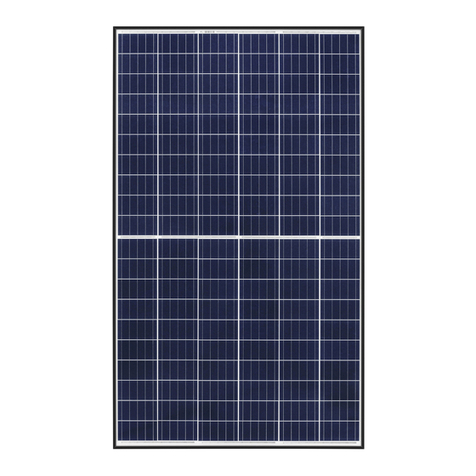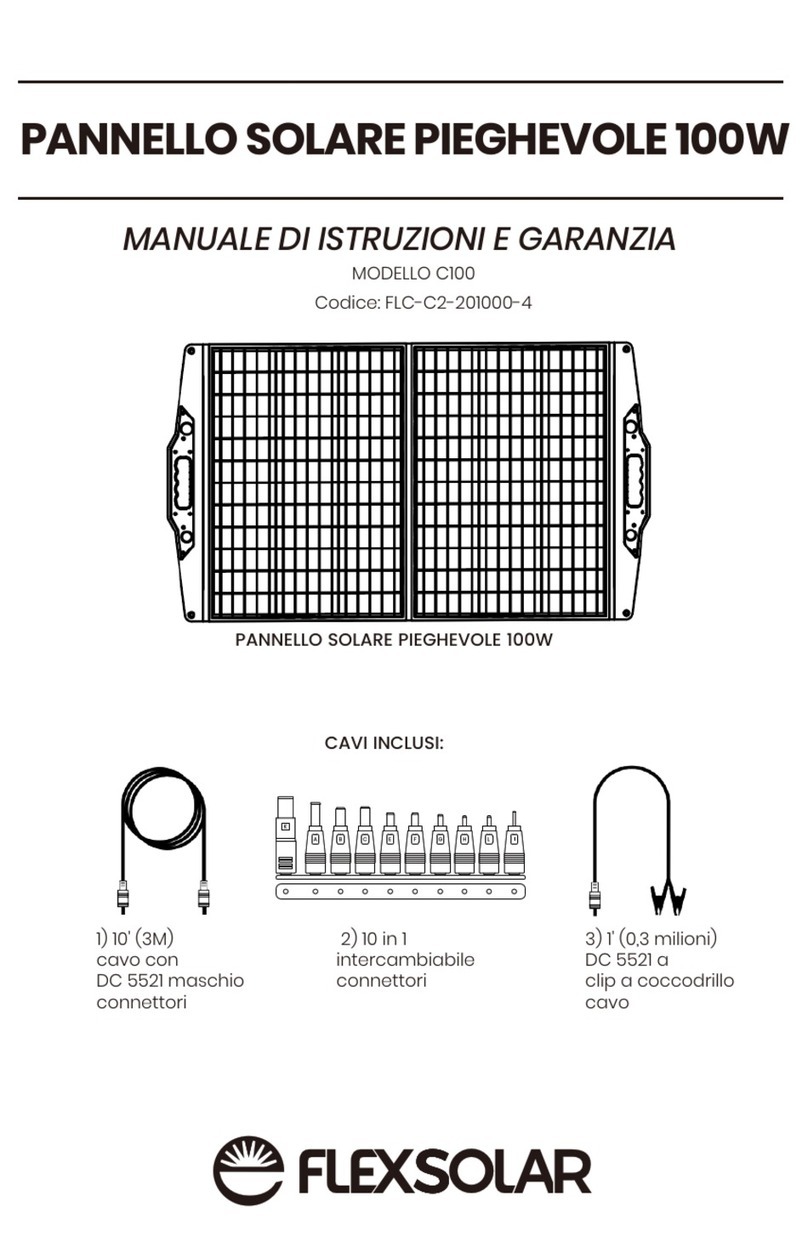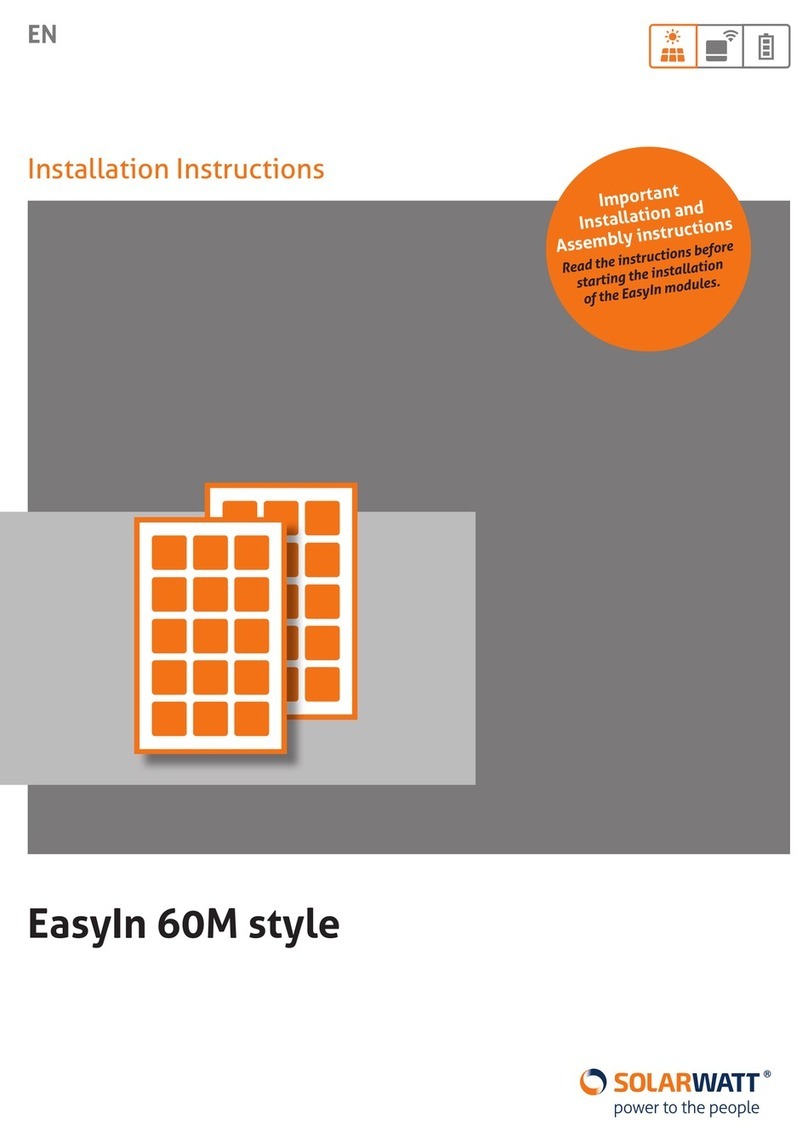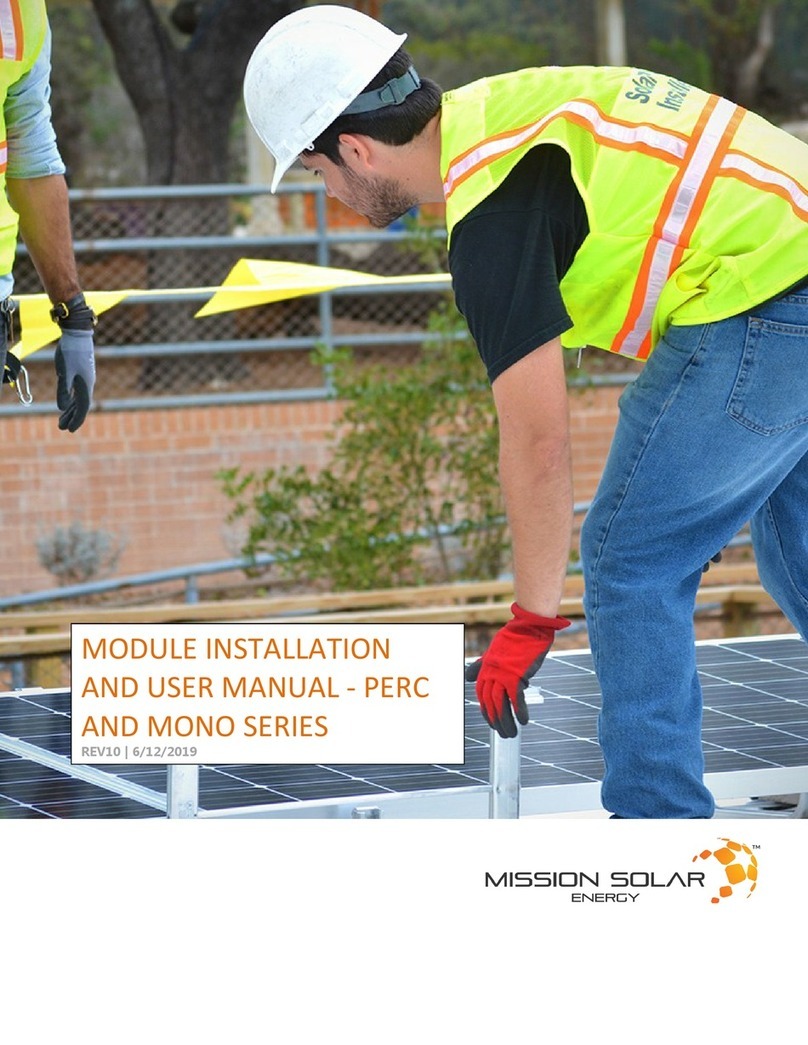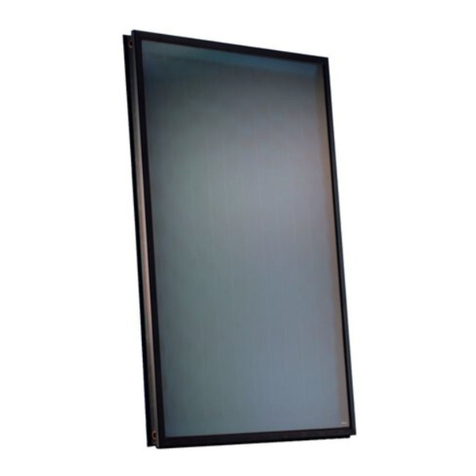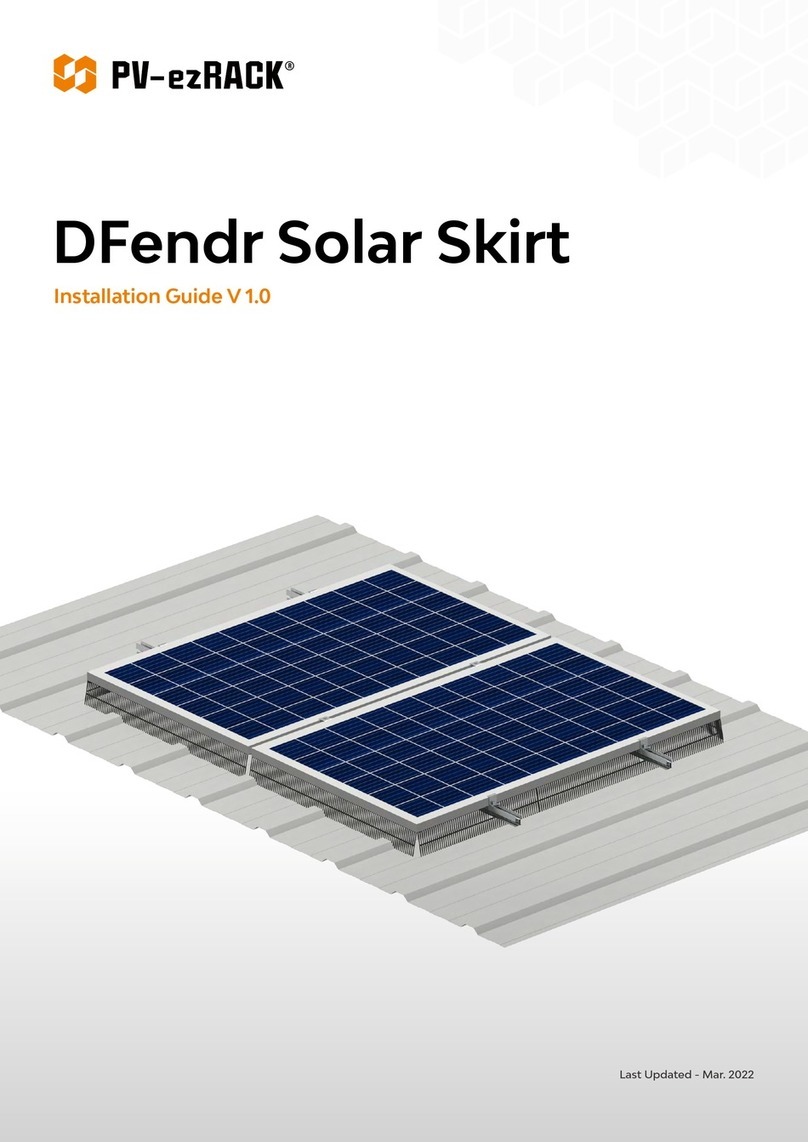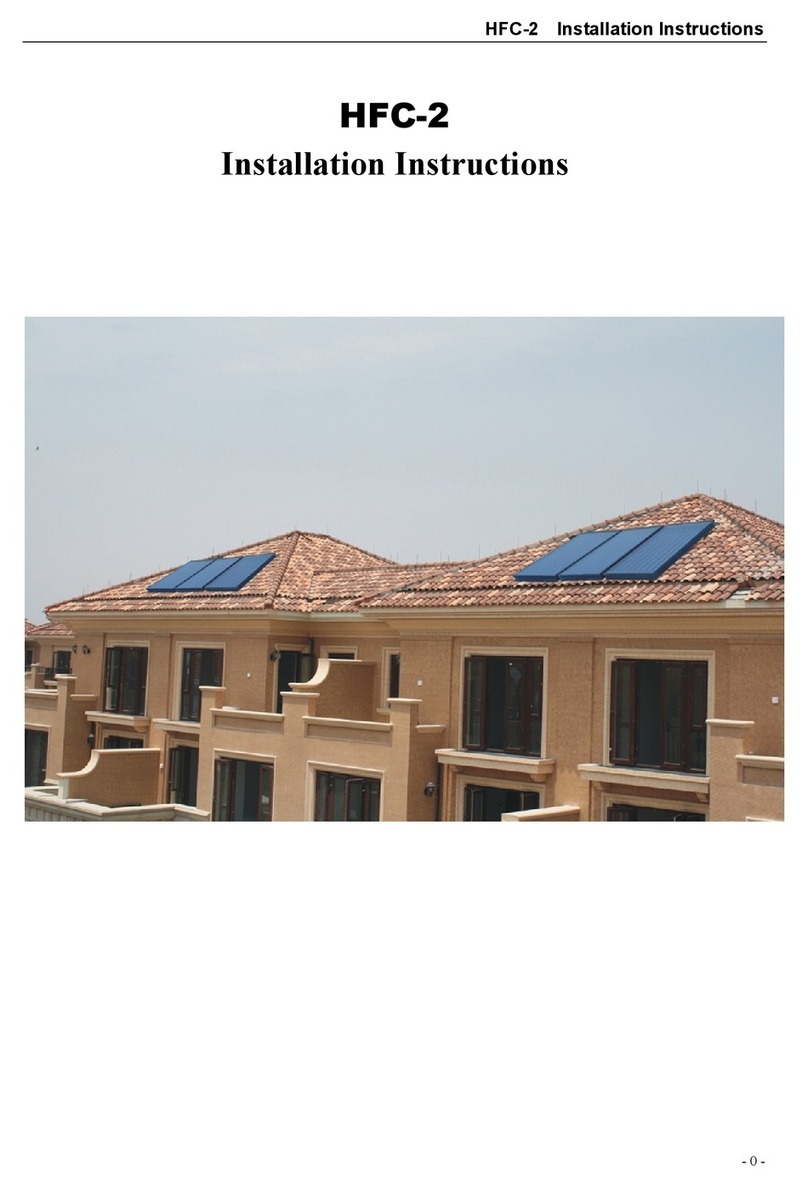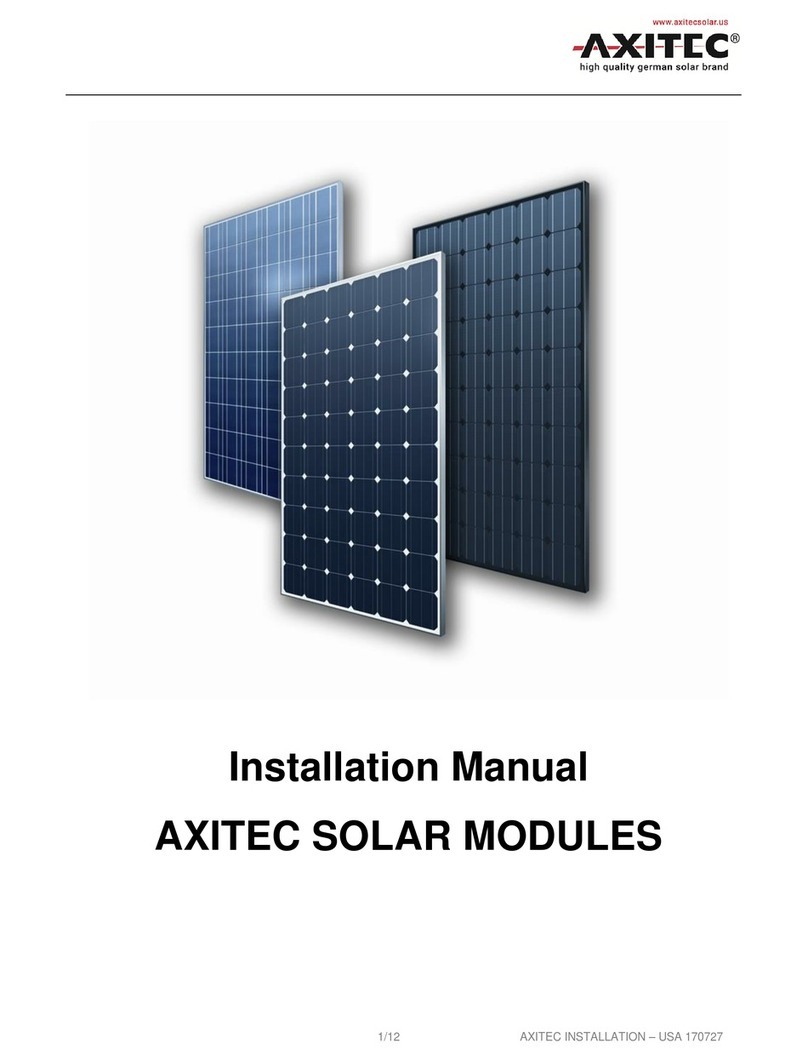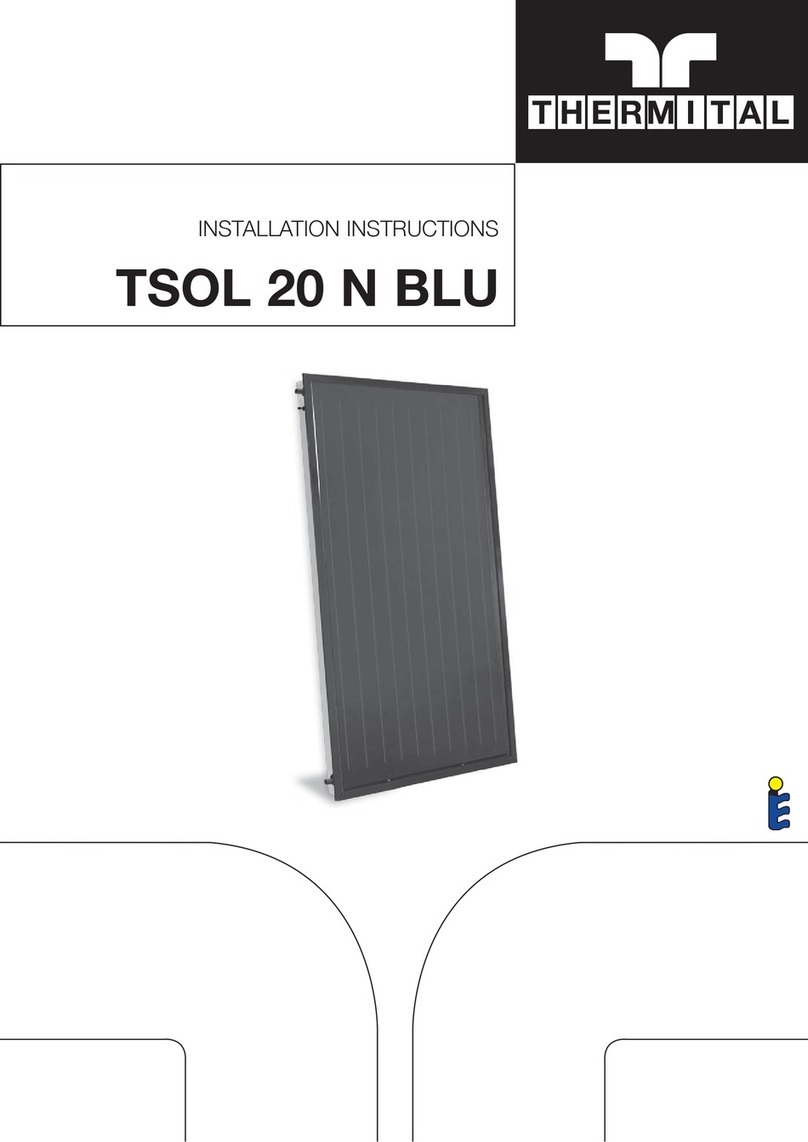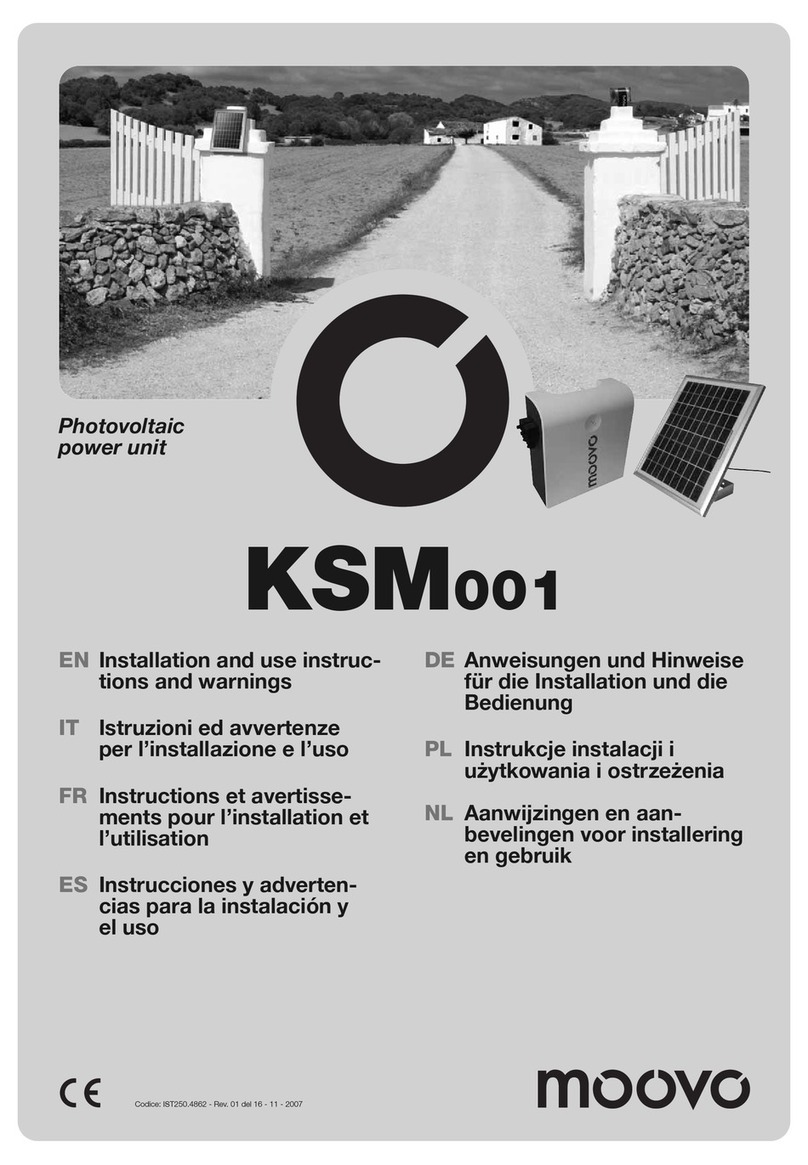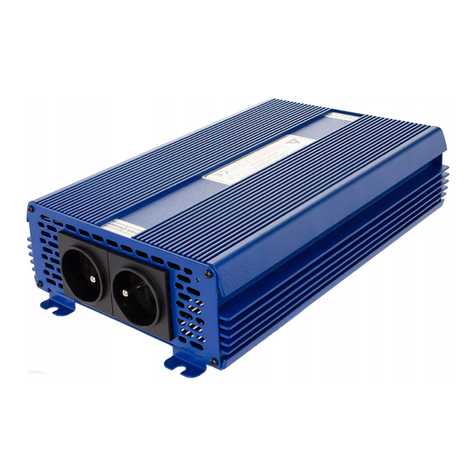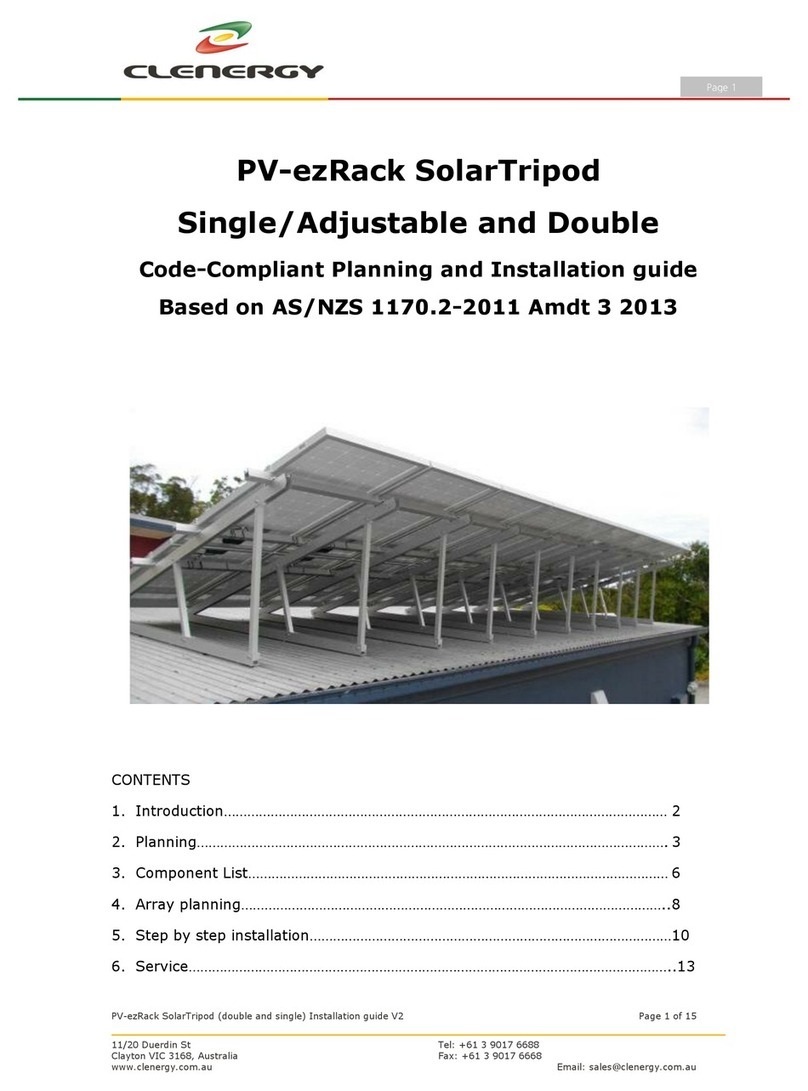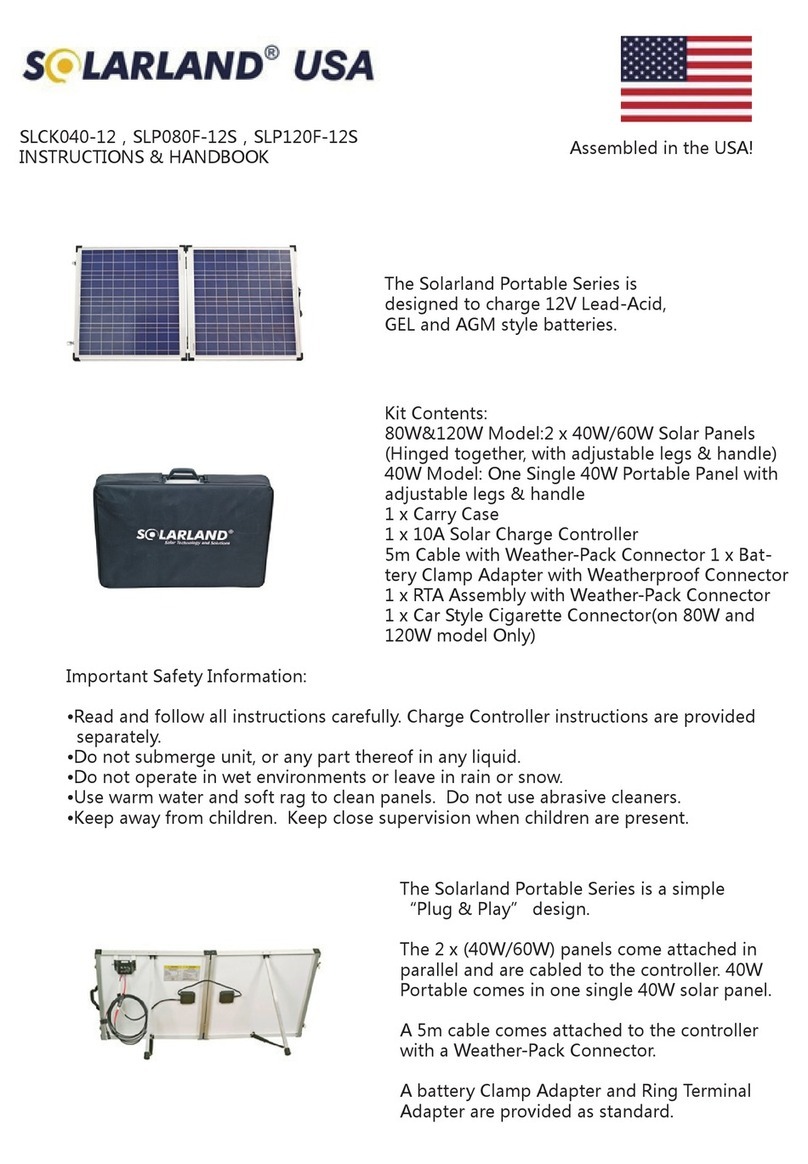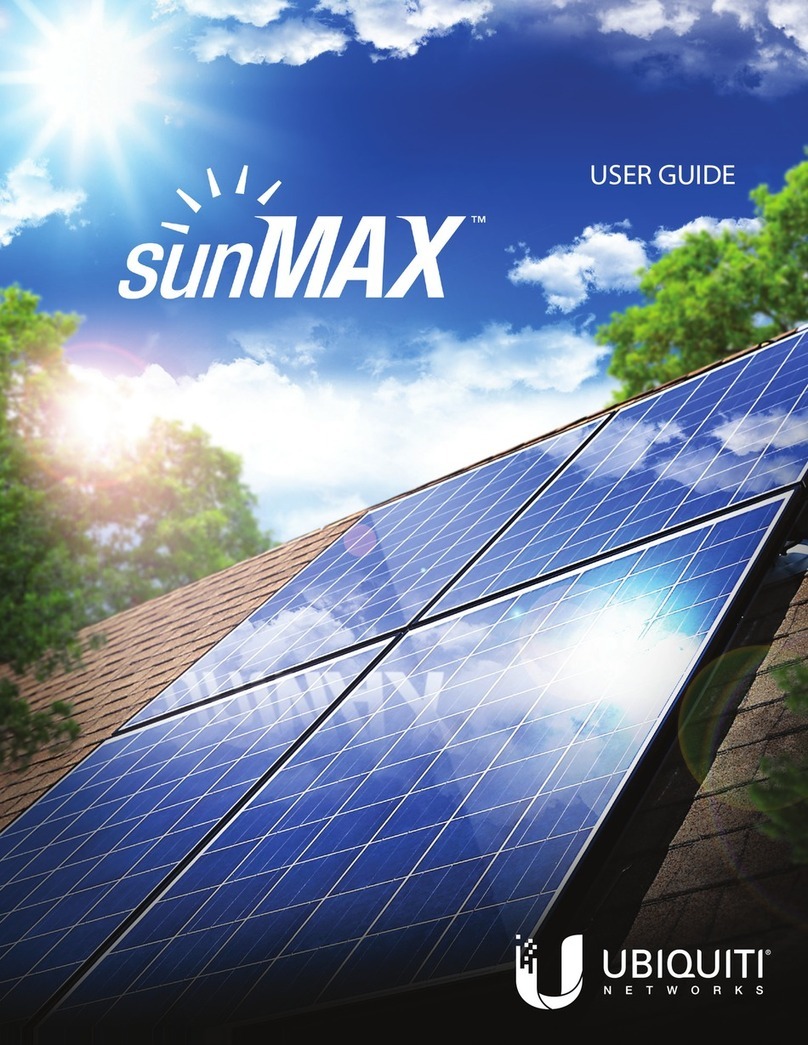3 xProduct description
FA ROTEX Solaris DrainBack - 09/2016 7
3.2 Brief description
The ROTEX solar system is a thermal solar system for supplying
hot water for consumption and solar support.
Operating mode
The Solaris V21P, V26P and H26P high performance flat solar
panels convert solar radiation into heat with a high degree of ef-
ficiency. The heat carrying medium is water with which the
storage tanks are filled in accordance with the associated instal-
lation instructions.
As soon as the solar panels have reached a useful temperature
level, the buffer water in the storage tank (which is not under
pressure) is pumped directly through the panels. With insufficient
panel temperature, the circulation pump is switched off and the
system is drained automatically. This operating mode has
several advantages:
– High operating safety as there are no components (such as
expansion vessel, safety valve, vent valves) sensitive to dam-
age or interference
– Excellent heat transfer and heat storage capacity (system
works without antifreeze agents)
– Minimum maintenance requirements
– Frost proof
– No additional solar heat exchanger required
– No stagnation problems
Modular design
The system consists of several pre-assembled modules. Plug-in
technology and a high degree of pre-assembly ensure fast and
simple system installation.
outer layer of storage tank
The following storage tanks can be used for the ROTEX solar
system:
– ROTEX Sanicube Solaris (SCS): Highly thermally insulated,
pressure-less solar stratified tank (with possibility to connect
to a ROTEX condensing boiler).
– ROTEX HybridCube (HYC): Highly thermally insulated, pres-
sure-less solar stratified tank (with possibility to connect to a
ROTEX air/water heating pump).
– ROTEX GCU compact: Solar stratified tank with integrated
gas condensing boiler.
– ROTEX HPSU compact: Solar stratified tank with integrated
indoor unit of an air/water heating pump.
Electronic control
The fully electronic ROTEX Solaris R4 control unit ensures op-
timum utilisation of the solar heat (hot water heating, heating
support) and the observance of all safety-relevant aspects. All
parameters needed for trouble-free operation have been preset
at the factory.
3.3 System components for pressure-less
systems
3.3.1 System components for all systems
High performance flat solar panels
V21P ( 16 20 12)
H x W x D: 2000 x 1006 x 85 mm, weight: approx. 35 kg
V26P ( 16 20 10)
H x W x D: 2000 x 1300 x 85 mm, weight: approx. 42 kg
H26P ( 16 20 11)
H x W x D: 1300 x 2000 x 85 mm, weight: approx. 42 kg
Solar panel mounting rails FIX-MP
FIX-MP100 ( 16 20 66) for a V21P flat solar panel
FIX-MP130 ( 16 20 67) for a V26P flat solar panel
FIX-MP200 ( 16 20 68) for an H26P flat solar panel
The pressure-less system (DrainBack) must only be
used with the RPS4 control and pump unit (RPS3 25M
for large systems).
Prerequisite for fault-free operation in the DrainBack system is
that the connecting pipes are laid with a consistent gradient (at
least 2 %) and, with two-way connection, the bottom edges of
the solar panel with constant gradient to the return flow con-
nection or with equilateral connection, mounted horizontally.
Design, functionality, start-up and operation of the stor-
age tanks and other components not mentioned in
chap. 3.3 Solaris are not described in these instruc-
tions. Detailed information on these components can be
found in the associated operating and installation instructions.
The handling instructions and descriptions mentioned in these
instructions basically apply to all ROTEX storage tanks that can
be used in this solar system, even if only one type (e.g. SCS) is
described for illustrative purposes. If there are variances to other
storage tanks, special reference is made.
1a High performance flat solar panel V21P / V26P
1b High performance flat solar panel H26P
Fig. 3-2 Flat solar panel
2a Mounting profile rail
2b Solar panel securing clips
Fig. 3-3 FIX-MP
B
B
T
1a
V21P
V26P H26P
H
H
1b
2a (2x)
2b (2x)
